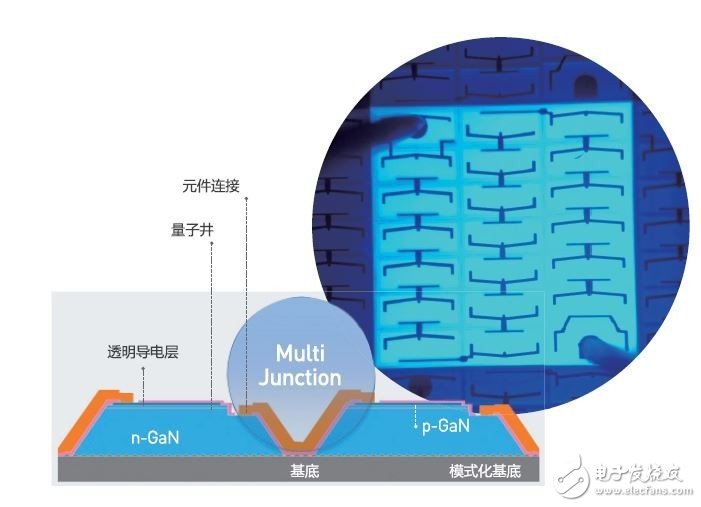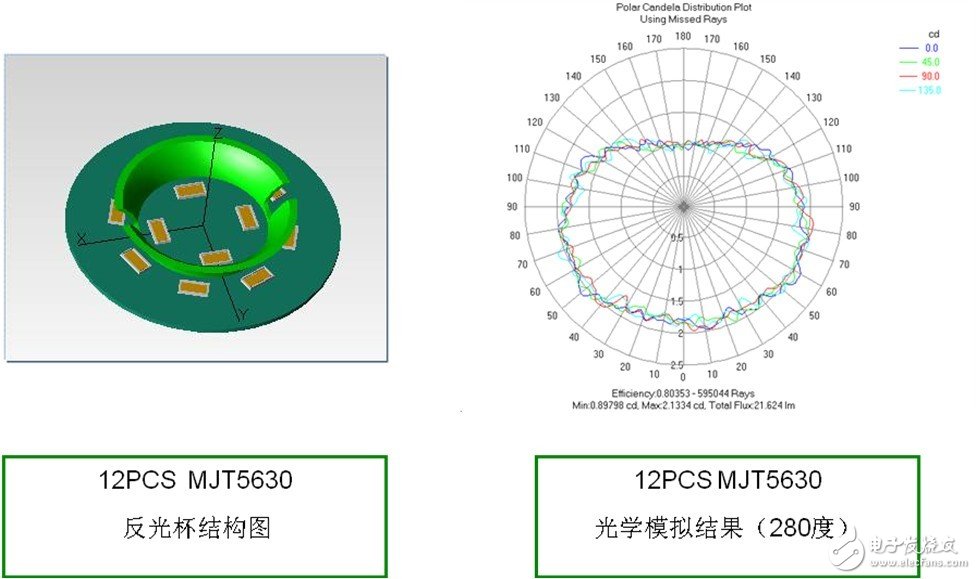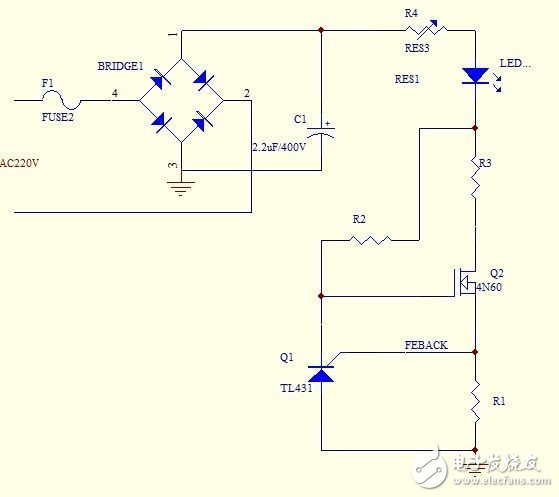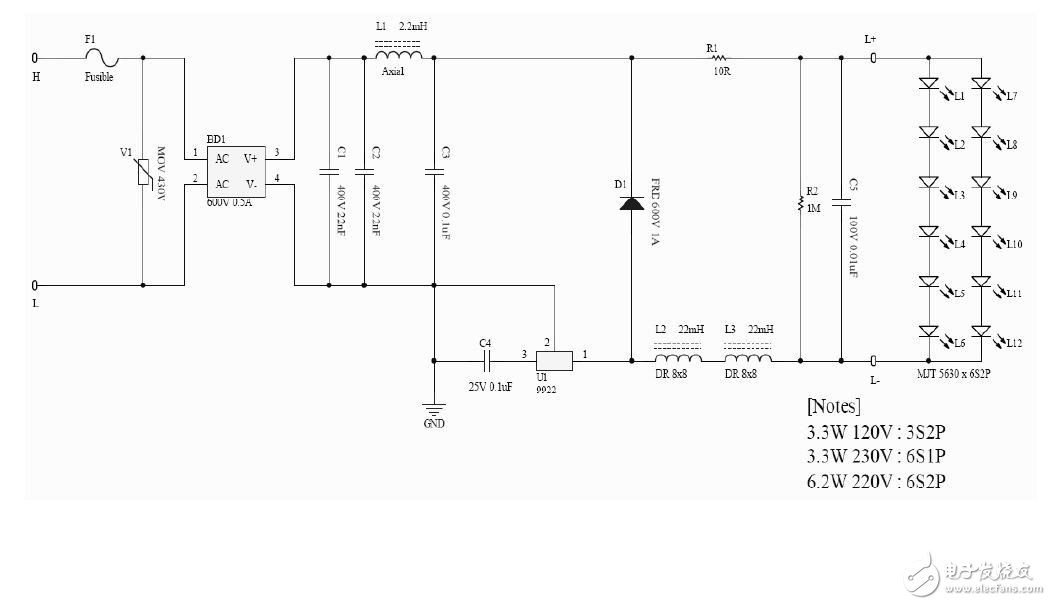About MJT
MJT is a multi-P/N junction technology that has a higher driving voltage than conventional LEDs. The high-voltage LEDs on the market are actually many LED chips connected in series and in parallel, and the circuit design is complicated. MJT uses multiple juncTIon technologies to be integrated in the same chip to obtain different voltage values.

1. Simplify the circuit to improve efficiency and significantly reduce system cost. 2. There is no need for gold wire electrical connection between LED P/N junctions to avoid various quality problems such as popcorn effect. 3. It is very effective for applications with size limitation, for example Minimize circuit up to 30% of A19 bulb applications 4. Multi-voltage applicability of only one chip 5. LED juncTIon number can be optimized according to voltage and efficiency requirements 6. Easy to design applications from AC to DC operation 7. Cost comparison for 8w bulbs with an efficiency of 88% - 100mA DC LED for 8W applications: 28 chips + power supply - 20mA for 8W applications MJT LED: 21 chips + power supply (30% component reduction)
Fewer LEDs - simplified circuit - smaller size - lower cost
The MJT5630 is a high-voltage SMD LED developed using multi-junction technology with a package size of 5.6x3.0x0.75mm.
ENERGY STAR qualified, a product with high light efficiency and high reliability.
Mainly used in bulbs, candle lights, etc., the advantages are:
1. It can adopt general switching power supply drive scheme to reduce system cost and peripheral component parameters. 2. Linear scheme can be used to make module form, saving drive space.


460lm bulb application recommendations:
1. Design requirements: Voltage: 200-240V
Power: 6.5 Max
Luminous flux :460 lm
Beam angle : 270°Min
CRI: 80 Min
CCT: 3000K
2. Design plan overview LED: 12 PCS SAW8KG0B
Secondary optics: use reflector glass drive mode: it is recommended to use linear constant current or BUCK type drive bulb housing: it is recommended to use high light transmission type PC blister bulb body heat dissipation: it is recommended to use heat conductive plastic 3. Optical structure light cup + blister light bulb

Outer ring 8pcs, spacing 32mm; inner ring 4pcs, spacing 17mm

MJT LED drive method 1 (LDO type)

MJT LED drive method 2 (buck type)

1) Reflective cup must use high reflective material, the reflectivity must be greater than 95%
2) When the driving method adopts the linear constant current (LDO) method, it must effectively solve the heat dissipation problem of the linear driving IC or MOS tube of the driving circuit. 3) The driving method of the MJT LED is non-isolated. If a metal casing is used, it must be Effectively solve the problem of insulation
We all know that the convex lens has the function of condensing and magnifying light. The reason is that the refractive index of glass and air are different. If the convex lens is deformed into a spherical shape as shown in the figure, it becomes a ball lens. The ball lens has a larger magnification than the ordinary convex lens. , But the magnification of a single lens is determined by the refractive index of the lens itself. We know that the greater the curvature of the convex lens, the shorter the focal length, so ball lenses have a shorter focal length than ordinary convex lenses.
Fused Silica Ball Lens and hemispherical lens have high transmittance between 200nm and 2.2μm, and low thermal expansion coefficient, making it an ideal choice for the most stringent ball lenses in ultraviolet, visible and near-infrared spectroscopy applications. Ball lenses are commonly used to improve signal coupling between optical fibers, transmitters, and detectors, as well as objective lenses in endoscopes and barcode scanning applications. The hemispherical lens can simplify the integration of the entire system.
Sapphire and ruby ball lenses are composed of alumina ruby or ruby-doped sapphire to purify chromium oxide (the chromium content in the ruby ball must be greater than 0.5%), and their physical and chemical properties are the same, but the optical properties However, there are some differences. Sapphire has a better optical transmittance, and ruby is easier to see, so it is suitable for physical applications.We all know that the convex lens has the function of condensing and magnifying light. The reason is that the refractive index of glass and air are different. If the convex lens is deformed into a spherical shape as shown in the figure, it becomes a ball lens. The ball lens has a larger magnification than the ordinary convex lens. , But the magnification of a single lens is determined by the refractive index of the lens itself. We know that the greater the curvature of the convex lens, the shorter the focal length, so ball lenses have a shorter focal length than ordinary convex lenses.
Optical Ball Lens,Ball Lens Fused Silica,Ball Lens Sapphire,Ball Lens Ruby
Bohr Optics Co.,Ltd , https://www.bohr-optics.com